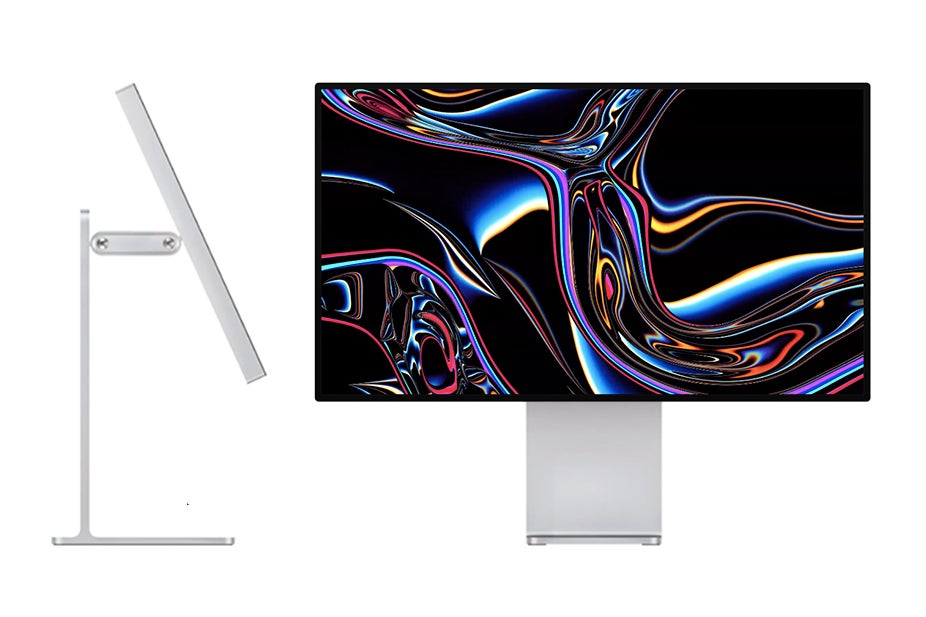Apple Mac Pro Display XDR: What you need to know about the ‘ultimate’ screen for creatives

The new Apple Mac Pro’s monitor, the Pro Display XDR is a 32-inch 6K LCD panel which boasts an impressive party trick – the ability to hit and maintain 1000 nits of brightness.
This is an exceptional feat, especially for any videographers wanting to work in HDR (high dynamic range), as it means in theory that it’s going to be bright enough for people to master content in accordance with the HDR10 standard and allow for more accurate colour grading.
For everyone else, it means that photos and video content viewed and played back on the Apple Pro Display XDR monitor should look sensational.
Related: Apple WWDC 2019

Apple Mac Pro Display XDR price – how much will the Mac Pro Display XDR cost?
More than the Mac Pro, by the looks of it. US prices will start at $4999, which converts to around £3950 at the time of publication – let’s hope that any future US-UK trade deals see a heavy discount on all consumer electronics.
Apple Mac Pro Display XDR price – when is the Mac Pro Display XDR coming out?
A launch date for the Apple Mac Pro Display XDR has yet to be announced.
Related: Best monitors
What is the Apple Mac Pro Display XDR?
Speaking at Apple’s WWDC 2019 conference, product manager Colleen Novielli, said that Apple’s engineers were able to achieve a feat that not even OLED panels can easily achieved thanks to some clever design.
Unlike OLEDs, which typically consist of one layer of LEDs, where each pixel is the light source, LCDs panels to consist of several layers of lights and lenses, with a lattice of LEDs forming a backlight – and the Apple Mac Pro Display XDR is no exception.
Novielli explained that a large number of blue LEDs serve as the Mac Pro Display XDR’s backlight. Novielli didn’t mention exactly how many, but said that each one was individually calibrated at the factory.
A proprietary algorithm then modulates every LED based on the content, with custom lenses and reflectors to precisely controlling the light.
“Now, a typical thermal system would make this impossible to achieve for more than a few minutes. So we did something amazing,” Novielli said.
“We designed the rear lattice pattern to act as a heatsink, and this doubles the surface area, quietly extracting heat from each LED. This display can maintain 1000 nits of full-screen brightness indefinitely. Forever! And 1600 nits peak.”

Apple is going to have to have done something really special here, as it’s claiming a contrast ratio of 1,000,000:1 – in other words, the black levels, the darkest shades the monitor is capable of displaying, is going to have to be pretty close to zero nits.
While LCDs burning at such high levels of brightness can also give off inaccurate colours, Novielli said: “We keep that colour accurate, at a super-wide viewing angle using a cutting-edge polariser, for contrast that’s 25 times better than a typical LCD display.
“The cover glass has our industry-leading anti-reflective coating. But for challenging lighting conditions, we’ve an innovative matt option. Most matt displays add a coating to the glass, and this scatters the light, but also adds unwanted haze and sparkle and it lowers the contrast. So instead, we precisely etched the glass itself, and this maintains image quality and contrast, along with low reflectivity.”
As well as scintillating levels of brightness, Novielli also said that the DCI-P3 colour space would be fully covered, and that the Pro Display XDR monitor supported 10-bits of colour – or 1024 shades of each primary colour.
HDR standards vary across the industry, with different standards in the studios all competing for dominance. In the world of PC monitors, things are just as bad, but generally, monitor makers like to refer to the VESA DisplayHDR benchmarks as a quick reference to their high contrast panels.
Apple’s arguably made things even more confusing, by releasing a monitor which meets the basic requirements of DisplayHDR 1000 – over 1000 nits peak luminance, 10-bit image processing – and then calling it XDR, which Novielli said is short for ‘Extreme Dynamic Range.’
Note to self: this is savvy Apple marketing spiel, not a new standard that’s being defined here. HDR has enough standards already.
To recap, the Apple Mac Pro Display XDR is a 32-inch 6K panel, with a pixels-per-inch count of 218, 1000 nits of brightness, 1600 nits of peak brightness, full DCI-P3 coverage, available in glossy or matt finishes. That’s a fantastic set of specs, and creatives should take note, and maybe think about asking their bank to extend more credit/ask their IT admin extra nicely for an increased budget.



